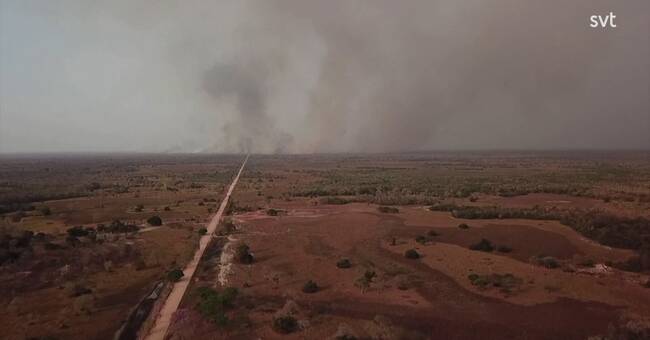So far, 100,000 fires have ravaged South America this year.
- It is a serious situation and the tragedy is that there is a sharp increase in wetland areas, says rainforest expert Olle Forshed.
The Brazilian Pantanal, the world's largest wetland area of almost 200,000 square meters, has had 12,000 fires.
Pictures from the devastation show dead caimans with gaping jaws, one last attempt to cool off, reports Reuters.
Few animals can be saved
Local veterinarians and biologists tell the news agency that they have encountered jaguars with very severe burns - and lots of charred animals.
- There are many tapirs and monkeys, says veterinarian Jorge Salomao Jr.
Few animals can be cared for.
The rescue operations are made more difficult by the fact that the individuals are often in areas far from buildings and roads.
How many animals may have died in the Pantanal so far is difficult to estimate, says Forshed.
What you can do to get an idea is to look at what it has looked like in previous fires.
- In Australia, three billion animals died, he says.
"A huge loss of life"
In South America, vertebrate populations have declined 94 percent since 1970, according to the latest WWF report.
And the fires are not supposed to ease the situation.
- The animals are probably hit very hard.
Above all, it is amphibians and salamanders that are affected, says Olle Forshed and continues:
- Fires, deforestation and climate change.
All this contributes to a huge loss of life.
"Human impact"
There are several reasons why it is burning in an area that should actually be wet, says Forshed:
- Climate change can play a major role.
When it gets a little drier, more dead branches and leaves are formed that remain on the ground, and then suddenly it starts to burn.
But it does not burn just because of a dry year.
- It is also human influence.
In the Amazon last year, there was a clear connection between deforestation and which areas burned, says Forshed.

